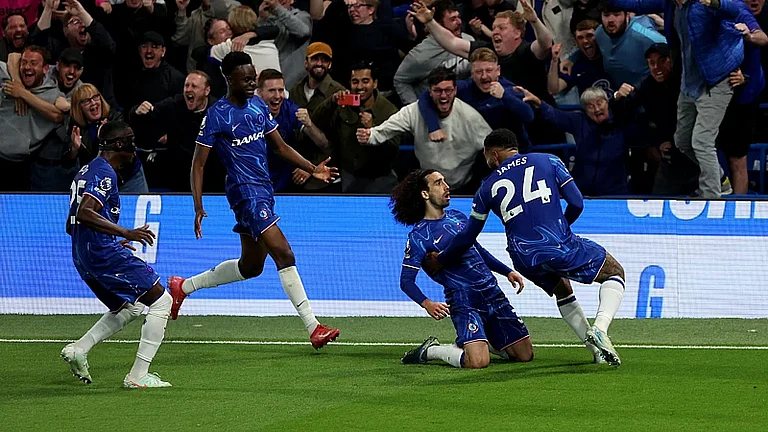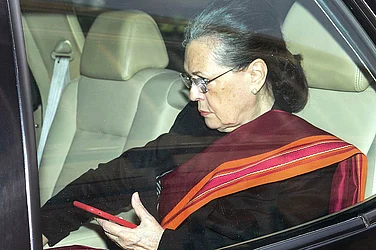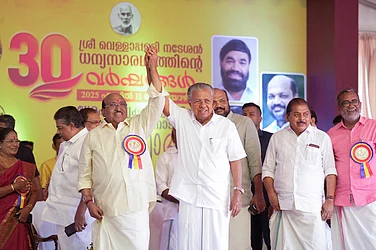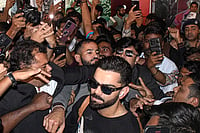Will Mumbai get a second airport? More important, given that its international and national air traffic has risen only marginally, does it need another one? Or is it simply yet another mammoth land-grab operation under way? If the Airports Authority of India (aai) has its way, then the answer to Mumbais messy and poorly-managed Chhattrapati Shivaji Airport is simple - build a new one at an estimated cost of Rs 20,000 crore, a figure which is bound to escalate in future.
For many years now, the aai has been eyeing the green Rewas Mandwa belt, located across the creek from mainland Mumbai, as a potential airport site. And seeing eye to eye with the aai are the Hindujas. In fact, a memorandum of understanding (MoU) was signed in June 1995 between then chief minister Manohar Joshi and a corporate entity called Airport Alliance, which includes a British consortium of three companies, a Dutch company and the Hindujas and their flagship outfit, Ashok Leyland.
Airport Alliances pre-feasibility study shows considerable interest in Rewas Mandwa and also claims closing down the existing airport at Sahar and developing it into a commercial hub would contribute greatly to the financial viability of the new project.
Says R.J. Shahaney, chairman of the Chennai-based Ashok Leyland: "Ashok Leyland has no vested interests in the selection of Rewas Mandwa as the most suitable site. But it is obvious that making the existing airport more competent should be the priority of the aai. It was Ashok Leylands opinion after studies that closing down the existing airport will make the new project financially viable but I cannot comment on whether the existing airport will be eventually shut down." A feasibility study conducted by Ashok Leyland concluded: "Ideally, the viability and profitability of the enterprise is more than assured if the existing airport is made to close after the new airport is operational." As if on cue, another study conducted by Mott MacDonalds, a partner in the enterprise, also agreed that the existing airport should be closed down for making the new project truly viable.
The Hinduja connection and the suggestion that the massive Sahar airport complex should be hawked as real estate has raised suspicions about the aais real intentions: is it pressing for a new airport at the behest of the real estate/builder lobby?
Says former leader of the Opposition in the state assembly and chief of the Peasants and Workers Party, Dutta Patil, "They want Rewas Mandwa not for an airport but to acquire it at government-stipulated prices. Then when they dont get the clearance for obvious reasons, they will organise a gazette renotification and develop the area into a rich residential locality and sell it out by the square foot. If for some reason they manage to build an airport there, they will close down the existing airport and sell it because property at Santa Cruz is now worth its value in gold. Its all about land grabbing."
The new airport project doesnt have the approval of the present political leadership. Says Maharashtra chief minister Vilasrao Deshmukh: "I have reservations about the Rewas Mandwa site because of opposition from the locals and environmental concerns. Recently, even Najma Heptullah had raised the issue with the ministry of environment and forests. It is unlikely that the ministry will give clearance to the site. I believe the City and Industrial Development Corporation of Maharashtra (cidco, a state government organisation) site, which was one of the options, would be a better idea because the land is in our possession. " cidco has already requested approval for developing a new airport at Nhavi Mumbai but the central government is opposed to it.
However, a panel headed by aai chairman D.V. Gupta recently reaffirmed the suitability of Rewas Mandwa for developing Mumbais second airport. The aais obsessive interest in this green belt has fuelled speculation that the Hindujas and the British consortium could have influenced it.
The aai has hankered after Rewas Mandwa for a long time. But as early as 1986, a J.R.D. Tata Committee report concluded, "The group has serious doubts about the suitability of this site (Rewas Mandwa)." The Tata committee, however, did feel the need for a second airport, largely because of forecasts predicting a steep rise in air traffic. But this expectation has been belied. Even the aai has been revising its saturation points for the existing airport: one said it would happen in 2016, an earlier projection predicted the saturation point by 1995 and a third study by 2000-1.
Indeed, theres little consensus on the projection of air traffic at Mumbais airport - technically two, Sahar (international) and Santa Cruz (domestic), but with a shared apron area. While the Mumbai airport today caters to a modest 8 to 10 million passengers every year, the Tata committee had predicted an astounding figure of 25 million. A study conducted by the International Airports Authority of India (now merged with aai) had thrown up figures like 14.83 million in 1996 and 17.57 million passengers a year later. Thats why the aais projected growth rate of 4.5 per cent, or some 25 million passengers in 2016, has to be taken with a pinch of salt.
Even if this projection is true, does this warrant a new airport? Says an angry former Air-India chief, Captain V.S. Mathur: "The aai says it cant extend the runways and so needs a new airport. What were they doing all these years when about 200 acres were encroached on? Also, the aai has leased land to fancy hotels like Leela Kempinski and they now say it is not possible to extend the runway or build a parallel one, taking recourse to some technical gibberish."
The aai stresses a parallel runway cant be built since the International Civil Aviation Organisation stipulates that at least 760 metres should separate parallel runways. Since this land is not available, theres no question of building a new runway at the existing airport. But Mathur disagrees, "How did Frankfurt do it then? See, if you want to do something, you will. But if you dont want to, you will search for excuses."
Mumbais airport sits on some 2,000 acres for its 8-10 million annual traffic. In contrast, Hong Kongs Chang Kai Tak is housed on 867 acres and handles 80 million passengers. Captain Ayodh Kapoor, director of the Federation of Indian Pilots, says that a new airport is not necessary were the aai to get its act together. "You can handle the traffic if you have equipment and good manpower. But do we have the political will to do it? The controller in the tower, the man at the counter, nobody here is interested in working harder or better," he says.
Those for a new airport justify it on the grounds of future needs. Says member (operations), aai, Robey Lal, "All international cities have more than one airport. So why not Mumbai? You could have a situation where traffic grows. After all, aviation is one of the expanding areas in this country."
With the plan to build a new airport yet to concretise, no one in the government is talking of environmental issues. The aai itself takes a dim view of the subject and declares loftily, "The environmental analysis will be undertaken only for a specific site after it is accepted, as such analysis is time-consuming and expensive." The aai somehow presumes that the damage to the environment of the chosen site will not affect the rest of the region.
But environmental activist Medha Patkar counters, "The state, hand-in-glove with capitalists, is pushing the project without conducting the necessary analysis of the socio-environmental impact." And what about the local people? Whether or not an airport is constructed at Rewas Mandwa, the 30,000 people who reside there are living on the edge. For, they have heard that the government is coming here soon.






















